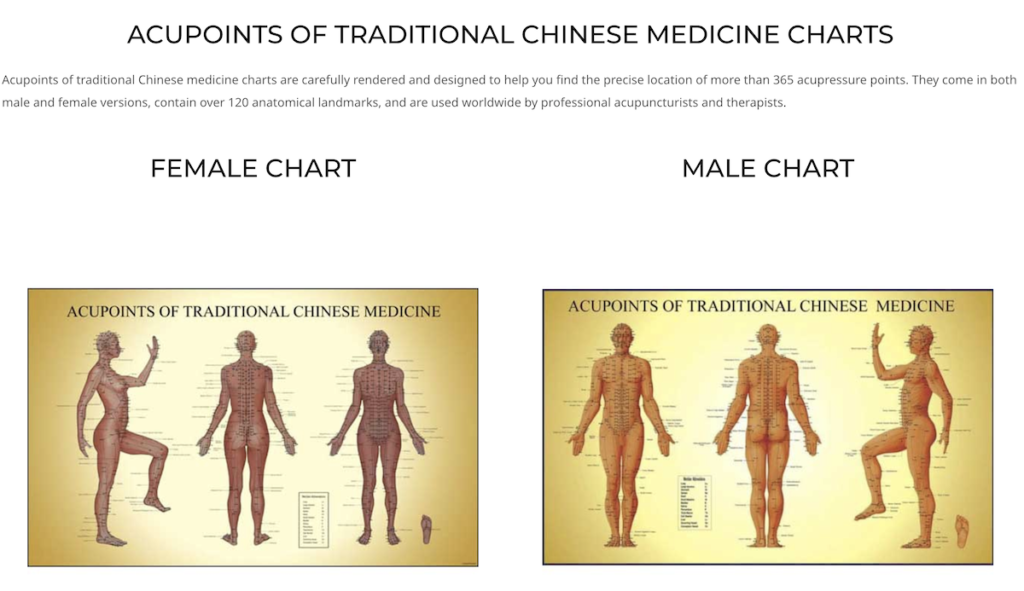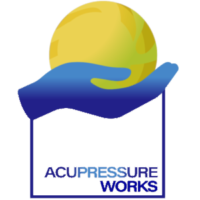Headaches are a common ailment affecting individuals worldwide, and their impact on daily life can be substantial. While modern medicine offers various pharmaceutical interventions, an alternative approach gaining popularity is acupressure—a traditional healing practice rooted in Eastern medicine. Acupressure involves the application of targeted pressure to specific points on the body, known as acupoints, to stimulate the body’s natural healing abilities. When it comes to treating headaches, acupressure emerges as a holistic and non-invasive option that many individuals find effective.
Headaches can manifest in various forms, including tension headaches, migraines, and cluster headaches, each characterized by distinct patterns of pain and discomfort. Tension headaches often present as a tight band of pressure around the head, while migraines are associated with throbbing and intense pain, often accompanied by sensitivity to light and sound. Cluster headaches typically occur in cyclical patterns, causing severe, piercing pain.
Understanding the relationship between these acupressure points and the various types of headaches allows individuals to tailor their approach to their specific symptoms. While acupressure is generally considered safe, it’s essential to consult with a healthcare professional before incorporating it into a headache management plan, especially for individuals with pre-existing health conditions.
Types of Headaches according to Traditional Chinese Medicine
Liver Yang Rising Headache

- Location: Sides of the head, often near the temples.
- Symptoms: Throbbing pain, irritability, dizziness, red eyes, and a flushed face.
- Causes: Excessive stress, anger, or emotional turmoil leading to the rising of Liver Yang.
- Acupressure Points:
- GB 20 (Gallbladder 20): Located in the hollows between the base of the skull and the neck muscles, on either side of the spine. Press gently and massage in a circular motion.
- LV 3 (Liver 3): On the top of the foot, in the depression between the big toe and the second toe. Apply firm pressure and massage in a circular motion.
- Lifestyle Considerations: Engage in stress-reducing activities such as meditation, tai chi, or yoga. Avoid excessive alcohol and spicy foods.
- Symptoms: Throbbing pain, irritability, dizziness, red eyes, and a flushed face.
- Acupressure Points:
- LV 3 (Liver 3): On the top of the foot, in the depression between the big toe and the second toe. Apply firm pressure and massage in a circular motion.
Liver Qi Stagnation Headache

- Liver Qi Stagnation Headache
- Location: Usually on the sides of the head, especially around the temples.
- Symptoms: Distending pain, irritability, a lump in the throat, sighing frequently, and irregular menstrual cycles (for women).
- Causes: Chronic stress, frustration, or repressed emotions leading to stagnation of Liver Qi.
- Acupressure Points:
- LV 3 (Liver 3): On the top of the foot, in the depression between the big toe and the second toe. Apply firm pressure and massage in a circular motion.
- LI 4 (Large Intestine 4): Located on the back of the hand, in the web between the thumb and forefinger. Apply firm enough pressure with your opposite hand to elicit an achey sensation. Continue to apply pressure until the ache diminsishes.
- Lifestyle Considerations: Regular physical exercise, finding healthy outlets for emotional expression, and maintaining a balanced lifestyle are essential.
Wind-Cold Invasion Headache
- Location: Often at the back of the head and neck.
- Symptoms: Aching pain, aversion to cold, stiff neck, and clear or white nasal discharge.
- Causes: Exposure to cold or windy weather leading to the invasion of Wind and Cold pathogens.
- Acupressure Points:
- GB 20 (Gallbladder 20): Located in the hollows between the base of the skull and the neck muscles, on either side of the spine. Press gently and massage in a circular motion.
- UB 10 (Urinary Bladder 10): On the neck, below the base of the skull. Apply gentle pressure and massage.
- Lifestyle Considerations: Keep the head and neck covered in windy or cold conditions. Consume warming foods and drinks.
Kidney Deficiency Headache
- Location: At the top or front of the head.
- Symptoms: Dull pain, weakness in the knees and lower back, frequent urination, and a lack of motivation.
- Causes: Chronic overwork, insufficient rest, and aging leading to depletion of Kidney Qi.
- Acupressure Points:
- KI 3 (Kidney 3): On the inner side of the ankle, in the depression between the ankle bone and the Achilles tendon. Apply firm pressure and massage.
- GB 20 (Gallbladder 20): Located in the hollows between the base of the skull and the neck muscles, on either side of the spine. Press gently and massage in a circular motion.
- Lifestyle Considerations: Prioritize adequate rest, maintain a nourishing diet, and engage in activities that support Kidney energy, such as qigong or gentle exercise

Stomach Fire Headache
- Location: Typically at the forehead and temples.
- Symptoms: Throbbing pain with a sense of heat, bad breath, acid reflux, and a red tongue with a yellow coating.
- Causes: Excessive consumption of spicy or greasy foods, prolonged emotional stress, and irregular eating habits leading to Stomach Fire.
- Acupressure Points:
- ST 44 (Stomach 44): On the top of the foot, between the second and third toes. Apply gentle pressure and massage.
- LI 4 (Large Intestine 4): Located on the back of the hand, in the web between the thumb and forefinger. Apply firm pressure with circular motions.
- Lifestyle Considerations: Emphasize a cooling and nourishing diet, maintain regular meals, and practice stress management techniques like deep breathing.
Get your Acupoints of TCM Charts here:

Questions and Answers
- Liver Qi Stagnation Headache:
- Q: Can dietary changes help with Liver Qi Stagnation headaches?
- A: Yes, incorporating a balanced and nourishing diet, along with regular exercise, can support the free flow of Liver Qi and reduce the frequency of headaches.
- Q: Are there specific emotions linked to Liver Qi Stagnation headaches?
- A: Frustration, irritability, and repressed emotions are often associated with this type of headache. Finding healthy outlets for emotional expression is beneficial.
- Q: Can dietary changes help with Liver Qi Stagnation headaches?
- Wind-Cold Invasion Headache:
- Q: How can I protect myself from Wind-Cold Invasion headaches during the colder months?
- A: Keep the head and neck covered in windy or cold conditions. Consume warming foods and drinks to help ward off external pathogens.
- Q: Are there self-care measures for managing a Wind-Cold Invasion headache at home?
- A: Rest in a warm environment, drink ginger tea, and apply acupressure to GB 20 and UB 10 for relief.
- Q: How can I protect myself from Wind-Cold Invasion headaches during the colder months?
- Kidney Deficiency Headache:
- Q: Can Kidney Deficiency headaches be aggravated by overworking?
- A: Yes, chronic overwork and insufficient rest can deplete Kidney Qi, leading to headaches. Prioritizing adequate rest is crucial for prevention.
- Q: Are there specific exercises that can help support Kidney energy and reduce headaches?
- A: Gentle exercises like qigong or tai chi can be beneficial. These practices help nourish Kidney Qi and promote overall well-being.
- Q: Can Kidney Deficiency headaches be aggravated by overworking?
- Stomach Fire Headache:
- Q: Is there a link between diet and Stomach Fire headaches?
- A: Yes, excessive consumption of spicy or greasy foods can contribute to Stomach Fire headaches. Emphasizing a cooling and nourishing diet is recommended.
- Q: Can stress management techniques alleviate Stomach Fire headaches?
- A: Absolutely. Practices such as deep breathing, meditation, and maintaining regular meals can help manage stress and reduce the likelihood of Stomach Fire headaches.
- Q: Is there a link between diet and Stomach Fire headaches?
- Liver Yang Rising Headache:
- Q: What can I do to prevent Liver Yang Rising headaches?
- A: Engage in regular stress-reducing activities such as meditation or yoga. Avoid excessive alcohol and spicy foods, and prioritize a balanced lifestyle.
- Q: Are there specific triggers for Liver Yang Rising headaches?
- A: Emotional stress and anger are common triggers. Identifying and managing these triggers can help prevent the recurrence of headaches.
- Q: What can I do to prevent Liver Yang Rising headaches?
In summary, acupressure offers a holistic and alternative approach to managing headaches by targeting specific points on the body’s meridians. This practice aims to restore balance, alleviate tension, and promote overall well-being, providing a complementary option for those seeking relief from the often-debilitating effects of headaches.
